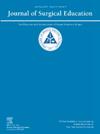Learning Surgical Fundamentals in the Digital Age, a YouTube Review
IF 2.1
3区 医学
Q1 EDUCATION, SCIENTIFIC DISCIPLINES
引用次数: 0
Abstract
Introduction
YouTube has become a widely used resource for medical students and trainees seeking instruction in surgical skills, including suturing techniques. While accessible, YouTube lacks formal peer review, raising concerns about the quality and reliability of its educational content. This study analyzes the landscape of YouTube suturing videos, with a focus on content quality, instructor background, and engagement patterns.
Objective
To characterize YouTube's suturing instruction videos by evaluating the background of instructors, suture techniques demonstrated, and viewer engagement, in order to identify trends in educational content and areas for improvement.
Design
This cross-sectional study included 303 YouTube videos selected for English-language suturing instruction. Videos were categorized by the instructor’s medical specialty and the suture patterns demonstrated. Engagement metrics, including view count and like count, were analyzed to assess viewer preferences and trends.
Results
Videos created by healthcare professionals, particularly those with surgical backgrounds, attracted the highest levels of engagement. Plastic and general surgeons produced 6 of the 10 most-viewed videos, while oral-maxillofacial surgeons had the highest median view count per video and neurosurgeons had the highest median like count. Fundamental suture patterns, such as subcuticular running, simple interrupted, and simple running, were the most popular, aligning with the needs of trainees. However, advanced suturing techniques were underrepresented, suggesting a gap in available instructional content.
Conclusions
This study highlights the importance of healthcare professionals in producing high-quality YouTube content to meet the demand for reliable medical education. While fundamental techniques are well-represented, there is a need for comprehensive, high-quality tutorials on advanced suturing methods. By expanding educational content, medical professionals can enhance the quality of open-access surgical education for a global audience.
在数字时代学习外科基础知识,YouTube评论
youtube已经成为医学生和实习生寻求外科技能指导(包括缝合技术)的广泛使用的资源。虽然可以访问,但YouTube缺乏正式的同行评审,这引发了人们对其教育内容的质量和可靠性的担忧。本研究分析了YouTube缝合视频的现状,重点关注内容质量、讲师背景和参与模式。目的通过评价YouTube的缝合教学视频的讲师背景、所展示的缝合技术和观众参与度,以确定教育内容的趋势和需要改进的领域。设计:本横断面研究选取了303个YouTube视频,用于英语缝合教学。视频根据讲师的医学专业和所展示的缝合模式进行分类。用户粘性指标,包括观看次数和点赞次数,被用来评估观众的偏好和趋势。结果由医疗保健专业人员,特别是具有外科背景的专业人员制作的视频吸引了最高的参与度。在10个观看次数最多的视频中,整形外科和普通外科医生制作了6个,而口腔颌面外科医生的视频观看次数中位数最高,神经外科医生的视频观看次数中位数最高。基本缝合方式,如表皮下缝合、简单间断缝合和简单缝合最受欢迎,符合学员的需求。然而,先进的缝合技术代表性不足,表明可用的教学内容存在差距。结论:本研究强调了医疗保健专业人员在制作高质量YouTube内容以满足可靠医学教育需求方面的重要性。虽然基本的技术是很好的代表,有一个全面的,高质量的教程对先进的缝合方法的需要。通过扩大教育内容,医疗专业人员可以提高面向全球受众的开放获取外科教育的质量。
本文章由计算机程序翻译,如有差异,请以英文原文为准。
求助全文
约1分钟内获得全文
求助全文
来源期刊

Journal of Surgical Education
EDUCATION, SCIENTIFIC DISCIPLINES-SURGERY
CiteScore
5.60
自引率
10.30%
发文量
261
审稿时长
48 days
期刊介绍:
The Journal of Surgical Education (JSE) is dedicated to advancing the field of surgical education through original research. The journal publishes research articles in all surgical disciplines on topics relative to the education of surgical students, residents, and fellows, as well as practicing surgeons. Our readers look to JSE for timely, innovative research findings from the international surgical education community. As the official journal of the Association of Program Directors in Surgery (APDS), JSE publishes the proceedings of the annual APDS meeting held during Surgery Education Week.
 求助内容:
求助内容: 应助结果提醒方式:
应助结果提醒方式:


